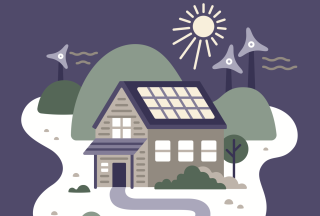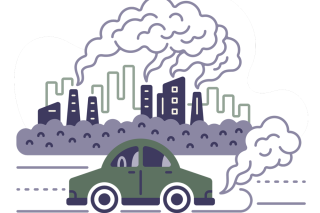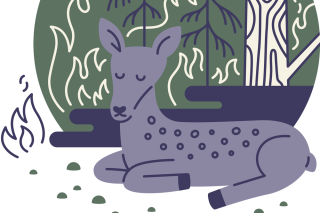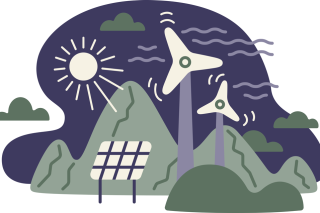Talking to Kids About Climate Change
Talking with kids about climate change can feel scary. It’s natural to want to protect children from worry and harm, but it’s also important to help kids understand the world around them and process their feelings about big challenges. Follow on the links below for tips on talking with kids about climate change in developmentally appropriate ways. Give these ideas a try when your family is ready.


A Simple Way to Explain Climate Change
School-aged kids understand cause-and-effect and can begin to grasp the causes of climate change. Try using the following “blanket” metaphor to explain these causes in simple terms. Research shows it helps people understand and remember the basic mechanisms of climate change.

Image by Valerie Jar
Blanket of Gases
Our Earth is wrapped in a “blanket” of gases that hold in heat from the sun. Without any blanket, the Earth would be too cold. But now its blanket has grown too thick.

Image by Valerie Jar
Trapped Heat
That’s because people have added a lot of a gas called carbon dioxide to the blanket by burning gas and coal in our homes, cars, and factories. The more we burn, the thicker Earth’s blanket gets, and the more heat gets trapped underneath it.

Image by Valerie Jar
It’s Too Hot
The thick blanket is making our planet hotter and changing our climate. In Utah, it’s causing more droughts, heat waves, and wildfires that make life harder for people, animals, and plants.

Image by Valerie Jar
We Can Fix It
It’s a big problem, but we know what to do! We can use renewable energy that doesn’t add carbon dioxide to the blanket. We can protect people and nature. People around the world are finding many ways to stop making Earth’s blanket thicker.
What’s the Difference?
The difference between “weather” and “climate” can be confusing for kids. Time is the key to understanding these two terms. Weather happens over of a short period of time and can change very quickly. It can be sunny, rainy, and snowy in Utah all in one day! Climate is what the weather is like over a long period of time in a large region. One cold or hot day, or even season, by itself doesn’t mean the climate is changing. But when you look at the trends in weather data over decades, you can see how the climate has changed.
Next Step >>>
If you found this content useful, please consider sharing it with family, friends, and neighbors who might also be grappling with how climate change will affect their future. And, if you haven't done so already, consider paying a visit to the Museum in Salt Lake City to see the full Climate of Hope exhibition in person!
You can also head back to the Climate of Hope landing page to revisit some of the online content.